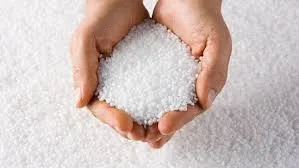The Role of Active Pharmaceutical Intermediates in Drug Development
Active pharmaceutical ingredients (APIs) are the biologically active components of drugs, responsible for their therapeutic effect. However, the journey from raw materials to APIs is a complex process that involves several key stages, one of which is the production of active pharmaceutical intermediates (APIs). These intermediates play a crucial role in the synthesis of APIs, acting as building blocks for the final drug product. This article will explore the significance of active pharmaceutical intermediates in the pharmaceutical industry, the challenges associated with their production, and the future trends in this vital sector.
Understanding Active Pharmaceutical Intermediates
Active pharmaceutical intermediates are compounds that are formed during the synthesis of APIs but are not themselves intended for therapeutic use. They are essential in the multi-step chemical processes used to produce complex molecules. Typically, the production of a single API can require several intermediates, each serving as a critical step towards the final product. These intermediates undergo various reactions, purification techniques, and quality control measures before being either converted to an API or further transformed into another intermediate.
Importance of Active Pharmaceutical Intermediates
The significance of active pharmaceutical intermediates cannot be overstated. They are pivotal in determining the efficiency, yield, and overall cost of the drug synthesis process. Efficient and cost-effective production of intermediates can lead to a reduction in the overall cost of drugs, making essential medications more accessible to patients around the globe.
Additionally, intermediates often have specific properties that are critical to the final API’s efficacy and safety. For instance, the purity of these intermediates can significantly affect the quality of the final product. Therefore, pharmaceutical companies must invest heavily in the research and development of robust synthetic routes that minimize impurities and maximize yields of these intermediates.
Challenges in Production
active pharmaceutical intermediates

Despite their importance, the production of active pharmaceutical intermediates faces numerous challenges. First, the synthesis of complex intermediates often requires sophisticated technologies and expertise in organic chemistry. This can lead to high production costs and extended timelines for drug development. The process also demands strict adherence to regulatory guidelines to ensure that all intermediates meet health and safety standards, which can add layers of complexity and bureaucracy to the production workflow.
Another pressing issue is the global supply chain of these intermediates. Many pharmaceutical companies rely on suppliers from different regions, which can lead to vulnerabilities related to geopolitical instability, trade restrictions, or pandemics, as witnessed during the COVID-19 crisis. These factors can disrupt the timely supply of intermediates and subsequently delay the availability of essential medicines.
Future Trends
Looking ahead, the pharmaceutical industry is witnessing several trends that may shape the future of active pharmaceutical intermediates. One of the most significant is the move towards greener and more sustainable manufacturing processes. With increasing regulatory pressure and public demand for environmentally friendly practices, many companies are revisiting their synthetic routes to reduce waste and energy consumption. Innovations in process chemistry, such as continuous flow technology and biocatalysis, are emerging as viable solutions for more sustainable intermediate production.
Moreover, advancements in artificial intelligence and machine learning are revolutionizing how pharmaceutical companies approach research and development. These technologies enable the rapid analysis of massive datasets, allowing chemists to optimize synthetic routes and predict outcomes with greater accuracy. As these trends continue to evolve, the efficiency and reliability of intermediate production are likely to improve significantly.
Conclusion
In conclusion, active pharmaceutical intermediates serve as the backbone of drug development, playing a critical role in the synthesis and quality of APIs. While challenges in their production remain, ongoing innovations in chemistry and technology are paving the way for more efficient, sustainable, and reliable processes. As the pharmaceutical landscape continues to evolve, the importance of these intermediates will only grow, underscoring their vital role in delivering safe and effective medications to patients worldwide.

